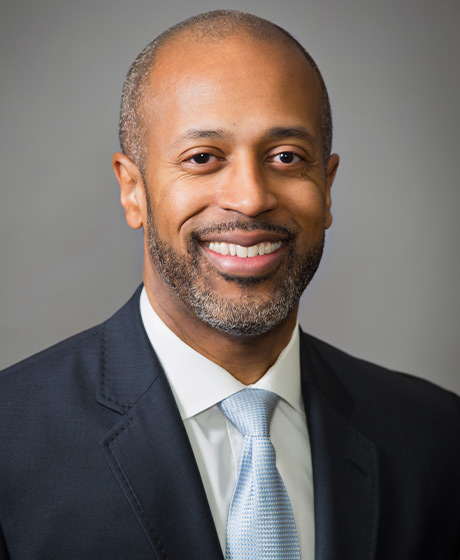
The Asian American experiences that deserve the attention of our schools
alifornia is home to the nation’s largest Asian American population, totaling 14 percent of its residents. Yet, while our state enjoys a reputation for embracing diversity, the reality of the current Asian American experience paints a different picture.
From March 2020 to May 2020, the Asian Pacific Policy Planning Council documented more than 800 COVID-related hate incidents against Californians of Asian heritage, and the pace has not slowed even as California has made progress against the virus.
In addition, the advocacy group Stop AAPI Hate used its online reporting tool to record more than 3,800 reports of hate incidents nationwide last year. The statistics also reveal a disturbing intersection between racism and misogyny. In a March 30 column in USA Today, Stop AAPI Hate founders Manjusha Kulkarni, Cynthia Choi and Russell M. Jeung noted that women reported harassment at a rate 2.3 times higher than men and often described a sexual component to the abuse. Overall, the hatred ranges from verbal harassment, to shunning, to being coughed or spat upon, to assault — and the alarming statistics do not include the large numbers that go unreported. Violence against people of Asian descent has largely been presented as a recent phenomenon, but the historical record shows that discrimination is a persistent feature of the Asian American experience, particularly in California.

Despite the persecution, by 1870, more than three-quarters of all Chinese immigrants to the United States lived in California and Chinese miners paid more than $5 million in taxes — nearly one-quarter of the state’s total tax revenue. And despite their contribution to California, the violence and discrimination against Chinese immigrants was unrelenting. In 1871, 18 Chinese immigrants were lynched when rioters attacked Los Angeles’ small Chinese community, a little-known tragedy that underscores the longstanding violence against Asian Americans. Then, in 1882, Congress passed the Chinese Exclusion Act, the first American law that barred a specific ethnicity or nationality from immigrating to the United States.
These and other atrocities against Asian immigrants receive relatively little attention, including the plight of Filipinos who endured intense discrimination in the California agriculture industry despite playing an important role in building the farm workers movement along with César Chávez and Dolores Huerta.
While the internment and dispossession of Japanese Americans during World War II is more familiar to Californians, it remains one of the most egregious examples of America violating its founding principles. Despite tens of thousands of Japanese Americans being forced into camps with no just cause or due process, not a single spy was ever discovered during the process, and when many of the interned were released, they returned to find their homes and businesses confiscated.
In the 1970s, Vietnamese Americans who immigrated to America from a country torn apart by years of war were frequently greeted with prejudice in their new home, and after 9/11, hate crimes against people perceived to be Muslim, including many people of South Asian descent, skyrocketed.
Most of these tragedies have not received the attention they deserve in the press, in the public conversation or in our curriculum. As those who have been entrusted with the governance of public schools, school leaders must consider how to present the full tapestry of American history — not to tear it down but to reinforce the historical conviction that we must work collectively as one to form the “more perfect union” that is idealized in the Constitution. We owe that to our students, to ourselves and to our country. This is, in part, the value of ethnic studies, which can elevate forgotten or overlooked parts of the American story and illuminate the trials, triumphs and contributions of all its people. This inclusive philosophy can be reflected in all aspects of the school curriculum, so that students develop an appreciation of the myriad ways in which our past, present and future are connected. This kind of understanding, and the empathy it breeds, is crucial if we wish to push beyond the division that is ever present in in our society.
Often, conversations around equity and positive school culture fail to fully include Asian American students, recognize their needs and address their concerns. We must avoid falling prey to the “model minority” trap that envelops Asian American students and obscures the very real issues that these students may be suffering. Many people are aware that Asian Americans, as a group, tend to have better high school graduation and college completion rates, and higher earnings than other ethnic and so-called racial groups. It is less well known that, in many districts, students of Southeast Asian heritage tend to have lower graduation and college completion rates than African Americans and Latinos, two student groups that are typically pictured when we discuss opportunity and achievement gaps.
There are, however, examples of districts that are responding to this moment with increased services to support the social and emotional health of Asian American students. A March 25 Education Week article noted that Anaheim Union High School District teacher Jeff Kim is launching an ethnic studies course that includes an ethnographic project where students trace their families’ migration to the United States and conduct oral histories on the experiences of family members who immigrated to America. The class will also feature civic engagement that pairs students with Asian American community organizations.
It is true that our history and our present are littered with, and have at times been defined by, examples of racism. Acknowledging the persistence of interpersonal and institutional racism does not mean it is inevitable, nor does it give us license to ignore it or shrug our shoulders and accept it. In fact, the opposite is true, particularly for those who work in public schools. Our unique position gives us the opportunity and the responsibility to create the foundation for a better America, one where the next generation brings the nation closer to its stated values. It is the duty of governance teams and school leaders to set the tone for students, staff and community through policy and communication that creates a culture of respect for all people, and an institutional commitment to anti-bullying and equitable opportunities.
We cannot change the past, but we can — and must — learn from it and improve upon it.
